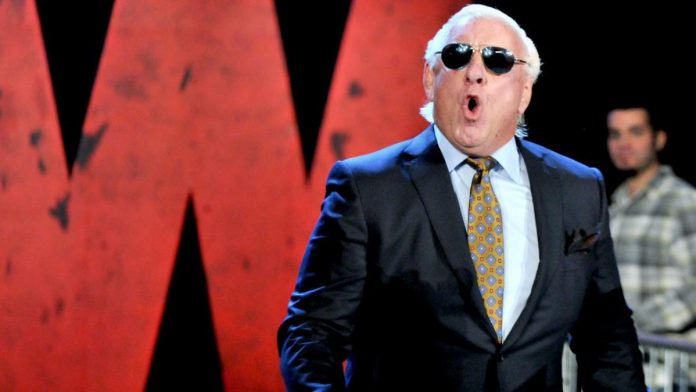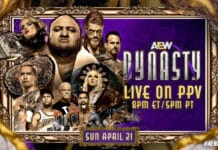
As much as the sport of professional wrestling or really any other topic can be fiercely debated these days, it’s almost unanimous that 2020 was quite probably the worst year in modern history. The corona virus caused a worldwide shut down and a level of illness that hasn’t been seen in over a century. The health and economic crunch that it caused for so many people around the world is far more important than any impact it had on sports. Still, as is usually the case with most things in life, professional wrestling became somewhat of a microcosm of the hurdles around the globe. How would small businesses, theme parks, and live entertainment adapt to health restrictions? The political unrest was on the level on a Cornette-Russo confrontation. Regardless of where you fall on the scale of concern of COVID, the impact the lack of live crowds had on the sports entertainment business will have a ripple effect that goes beyond just 2020. Many independent groups have either been shuttered or ran scaled back events that yielded mixed results in terms of safety and profitability. On the national scale, WWE maintained status quo in terms of the countless hours of content the WWE machine churns out because despite the big gates that major stadium events bring in, the company is in the television business, even more so than the live event business. The publicly traded corporation makes a profit based on its TV properties alone, anything else is just icing on the cake.
Still, so much of the TV presentation is the live reaction, and there hasn’t been a way to gauge just how over someone is or isn’t with the audience because there’s not a direct way to measure the response. Sure, you can look at social media replies, but we all know that social media is usually a cesspool and there will be some negative reaction toward almost anything so again, there’s not an accurate barometer of how fans would truly respond to certain performers.
Unfortunately, the numbers that have taken the biggest hit from the pandemic era are the numbers that matter the most to WWE brass outside of its stock price. The ratings for Raw have been at a record-low the past few weeks, suggesting that either the audience doesn’t want to watch a static program, (despite the improvements the thunder dome concept made) the viewers simply aren’t drawn to the product, or a combination of both. Whatever the reason, this is a major cause for concern because while the company is as big and as powerful in terms of revenue more now than any other time in history, it’s drawing the lowest amount of viewers for its flag ship show. It’s mind-boggling to consider, but “technically” Doink vs. Koko B. Ware drew better numbers than what Drew McIntyre and AJ Styles could garner in recent weeks. Does that mean the office should dust off Matt Borne’s old costume and get Frankie from the pet shop? No, but it makes a bold statement about the structure of the organization and its philosophy toward the modern landscape.
I’ve written about it several times the past few years that a major portion of the WWE product seemed to be geared toward the short end money, sacrificing the potential of the future for the easy money now. Was Brock Lesnar’s part-time run as champion that had the booking of Raw without him on the roster worth it compared to the stars they could’ve potentially been made with the championship on the shows? Was the forced Roman Reigns baby face push that was more for the corporate agenda than fan demand worth the opportunity cost of other stars that were more over at the time? Most importantly, was depending on nostalgia or part-time wrestlers to draw for big events really worth it at the expense of possibility making legitimate money-drawing stars for the future?
I penned a few articles recently that explained why the 50/50 booking doesn’t solidify anyone on the roster and that many wrestlers are more or less interchangeable because most of the promotional push spotlights the brand as the draw, not specific performers. The results also don’t have consequences because if Drew loses the belt to Randy Orton and then wins it back three weeks later, was there really any progress? If viewers didn’t watch for a month, did they really miss anything?
It was announced this week that WWE will start off the new year with a legends night on Raw. It’s the start of a new year and some level of hope that eventually the world will be back to normal. However, the office is going to start the new year with focusing on the past to draw ratings. Doesn’t this strategy sum up part of the problem? Drew, AJ, and a cast of other talented grapplers can’t keep viewers tuned into the show so management will showcase a group of legends that have much more star power than the current roster. That’s not a jab at Drew or AJ, but rather the structure of the product. Aside from the fact that it’s always great to see the legends, nostalgia can’t draw on a long-term basis. The reason is simple, the stars from the past are over with the audience because of their history in the business, but the bottom line is, there aren’t the same performers they were in their prime so what can be done with them has limited options. Everyone would enjoy seeing a strut off between Flair and Micheal Hayes because it recaptures their heyday for a brief segment, but after that they are just two former wrestlers trying to dance.
Perhaps, WWE should take a lesson from what they will be promoting on legends night.
Flair, Booker T, Kurt Angle and the others are stars because they essentially weren’t pushed with the current WWE philosophy. Did Ric Flair get booked to lose the NWA title without it being a major moment or storyline? More importantly, how many of Flair’s major wins are historic moments? Harley Race, Vader, etc. weren’t just matches on the assembly line the corporate machine, but rather they were presented as key bouts. When Angle was pushed upon his arrival in WWE, he wasn’t subjected to 50/50 booking that saw him garner and average record on television. The thunder dome, the stock price, and the WWE Network are all things that might make sports entertainment a more complex business now than it was a few decades ago, but the process to truly make stars is the same because getting over with the audience is based on human psychology, not conference calls. Fans will cheer for performers that connect with and if those characters are booked for compelling storylines then the fans will follow it. Stone Cold Steve Austin became the biggest star in the history of the business because the general public could easily identify with his blue collar persona. That character was booked against Mr. McMahon, a powerful tyrant. The story writes itself and a record number of people tuned in every Monday to watch it. Don’t get me wrong, the production of weekly episodes of live TV and several hours of content isn’t easy, but if the office wants to boast about the record-setting revenue on conference calls then the production of the content is the task.
In many ways, this legends night to kickoff 2021 is already a lose-lose scenario for WWE brass, even though it will get a number for USA for a week. If the legends don’t draw a rating, the WWE is still going to have to search for something to improve the numbers after they played their ace in the hole. On the flip side, if the legends draw a big number, it’s a statement that wrestlers from twenty or thirty years ago are more over than anyone on the current roster so what does that say about the company?
What do you think? Comment below with your thoughts, opinions, feedback and anything else that was raised.
Until next week
-Jim LaMotta
E mail [email protected] | You can follow me on Twitter @jimlamotta







